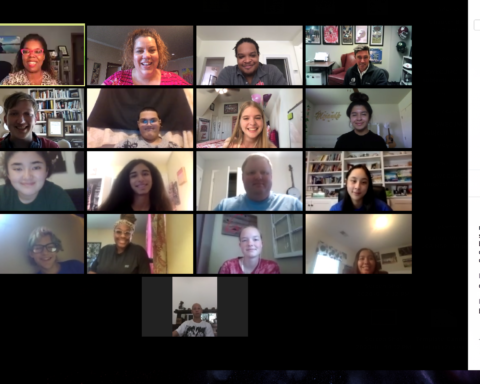
Story by Silas Bales, Highland Park High School—Dallas, Texas
The media has been a prevailing part of the world for years, and with the rise a global pandemic, the use of technology has been pushed to the forefront. Information about anything and everything can be accessed at any time through the use of technology.
According to a study by Emarketer earlier this year, adults are spending 82 minutes on average on social media alone, whereas last year the average was around 76 minutes.
With people spending more time on technology and less time with in-person social interaction, many find themselves looking toward top headlines and broadcast news for all their information.
Many young people have found themselves becoming more invested in current events and daily news with the rise of the global pandemic. But not all see it the same way.
“The media is creating a culture of opposition,” said Tom Porter, a high school senior from Dallas.
However, Berkeley Beitsch, a high school senior from Dallas, said the pandemic has made her more interested in the news in general.
“It made me look into more areas that I wasn’t previously looking into,” Beitsch said.
While many are looking more into the news, not everyone seems to be intrigued by it.
“I do see myself looking at the news more than previously, but I don’t think I am more interested in it, if anything I’m less interested,” said Oliver Miller, a student at Purdue University. “It’s easier than ever to be more informed, but there’s so much more misinformation spread online.”
From Twitter notifications to daily headlines, it can be difficult to decipher what the truth is. Misinformation is easier than ever to spread and can easily seep into peoples’ lives without their knowledge. According to a poll by Gallup, trust in the media has declined by 4% between 2018 and 2019, sitting at 41% of the population trusting the media a “fair amount.”
Jim Glass, the director of marketing at WFAA, a news station in Dallas, grapples with what news audiences are looking for during this time.
“The number one thing the audience wants are solutions and help,” said Glass, who has been with the network 31 years. “I think mental health issues are super important right now—people want more positivity than normal.”
Glass said he tries to gear the news his channel presents to effectively cover the global unrest.
“I think our viewers depend on us to communicate the facts you might not get on a national network,” Glass said.
Miller, Beitsch and Porter all indicated they are spending on average two to three more hours on technology daily during the pandemic than before it. This includes watching the news. That aligns with what Glass said he sees at WFAA.
“Our ratings in March and April were some of the highest they have ever been,” Glass said.
With restrictions lightening up on lockdown and more stores opening back up this summer, people are getting restless and want to return to their normal lives.
But with COVID-19 still being a prevailing part of daily life, it may not be what audiences want to hear about anymore.
“The audience has a love-hate relationship with COVID news,” Glass said.





